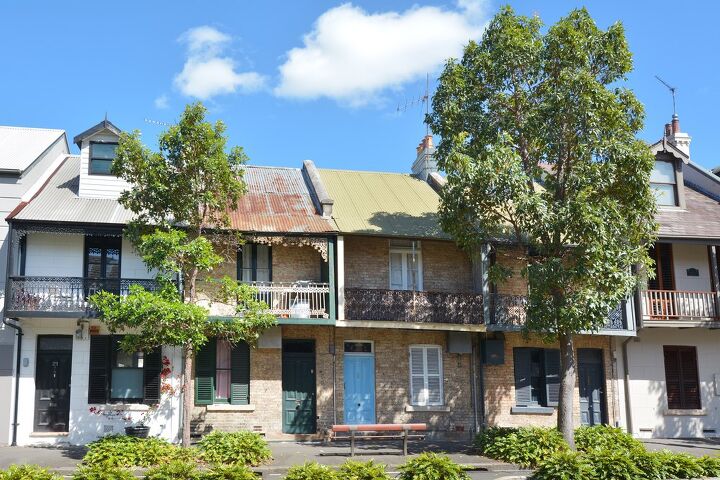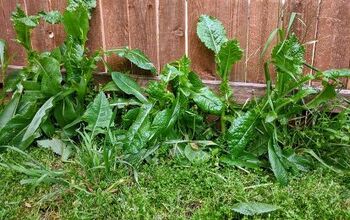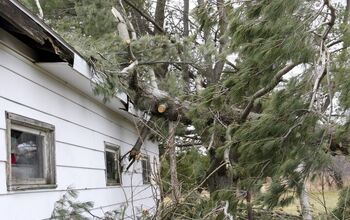What To Do If Your Neighbor Has A Dangerous Tree

The sight of a tree that looks like it could fall at any moment is terrifying. It can be even scarier if the tree is on your neighbor’s property, since you can’t have it removed. That’s why you may struggle with what to do if your neighbor has a dangerous tree.
Talk to your neighbor if you are worried about their dangerous tree. This should encourage them to hire an inspector to assess how risky the tree is. Take pictures of the tree and document your correspondence in case the tree falls because of their negligence. That way, you could file a claim against them if they did nothing about it.
You can also ask your other neighbors to write letters about the dangerous tree or even tell your HOA. The end goal is ultimately to get your neighbor to pay for tree removal before it’s too late. Follow along as we explore what to do if your neighbor has a dangerous tree.
What Can I Do If My Neighbor Has A Dangerous Tree?
Whether it be a simple conversation or involving an HOA, there are several ways to approach your neighbor who has a dangerous tree. The end goal should be for your neighbor to remove the tree without straining your relationship. Each of these methods is non-combative and can be quite successful:
1. Talk To Them
Talk to your neighbor if you are worried about their dangerous tree. This is the easiest way to encourage them to hire an inspector or remove the tree. Keep in mind that tree removal is expensive, so they won’t likely get excited about the upcoming cost.
That’s why it’s a great idea to approach your neighbor about it as politely as possible. After all, you don’t want to strain your relationship with them. That said, it’s important to voice your concerns so they take the problem seriously.
The worst-case scenario is that their tree will fall on your roof, and that’s quite dangerous. It shouldn’t come to that if the conversation goes well.
2. Take Pictures Of The Tree
Take pictures of the tree regardless of the conversation with your neighbor. These pictures will establish how dangerous the tree is. This will help your insurance provider if the tree falls, and it can also help if you sue your neighbor.
You can even show your neighbor the pictures in a non-threatening way and explain your concerns. It’s unlikely that your neighbor has bad intentions. That said, your neighbor may not take the problem seriously until you document the situation and demonstrate its severity.
3. Document Your Correspondence
It’s important to document your correspondence with your neighbor in case it doesn’t go well. This can help you establish negligence if your neighbor ignores your pleas, and the tree falls on your property. In that case, you can use the proof of your correspondence to prove that they did nothing to fix the problem.
This will come in handy if your neighbor does nothing about the dangerous tree. That’s especially true if you plan to sue your neighbor after their tree falls on your property. However, that should be your last resort.
Of course, this is primarily an option if you send emails, texts, or notes to your neighbor. You cannot unknowingly record your neighbor, so this doesn’t apply to face-to-face meetings.
4. Involve Your Other Neighbors
Do you have good relationships with your other neighbors? If so, you can use that to your advantage if your neighbor has a dangerous tree they won’t remove. Talk to other people in your neighborhood and see if they’d be willing to write a letter about the tree.
At the very least, this should show your neighbor that it’s not just you who is worried about the dangerous tree. This can also help your case if your neighbor does nothing, and the tree damages your property. In that case, you can provide proof that your other neighbors warned them, and they did nothing.
5. Ask Them To Hire An Arborist
Politely ask your neighbor to pay for an inspection if they don’t want to remove the dangerous tree. If it works, they will hire an arborist to see just how dangerous the tree is. You can even offer to split the cost or cover it altogether if you don’t want to upset your neighbor.
The arborist will likely check the trunk and roots for cracks that can eventually make the tree fall. From there, the arborist will decide whether it’s best to remove the dangerous tree. It’s ultimately up to your neighbor to decide whether or not to remove the tree.
Some insurance providers cover tree removal costs, but it depends on the company. Either way, the results of the inspection should encourage your neighbor to remove the tree.
6. Notify Your HOA
Do you live in a neighborhood with an HOA? If so, you can involve them if your neighbor won’t remove the dangerous tree. Homeowner associations, or HOAs, have lots of power because of their governing documents.
That said, governing documents vary between HOAs. HOA rules often include clauses about lawn and even tree maintenance. Many HOAs also take special interest in neighborhood hazards, such as dangerous trees.
You can talk to the HOA board in person, or simply send a letter or email if you’re more comfortable with that. Encourage your other neighbors to tell the HOA about the dangerous tree as well. That will show the HOA that it’s a real problem, and it will make them take it seriously.
7. Call The City
Call the city if your neighbor refuses to do anything about their dangerous tree. City officials ultimately have much more power in this case, so they can help quite a lot. They may order an inspection and send an arborist to assess the tree’s condition.
In that case, the city may order your neighbor to remove the tree. Unfortunately, the city won’t likely cover the cost of removing the tree if it’s on private property. It’s important to involve the city if you don’t want to sue your neighbor but want them to remove the tree.
A stern warning from the local government should be enough to make your neighbor hire a tree removal service. You can also easily make a legal case if it comes to that if you have proof the city told your neighbor about the risks.
Can You Sue Your Neighbor If Their Tree Falls On Your House?
You can sue your neighbor if their dead tree falls on your house if you can prove they were negligent. This is especially true if your neighbor had an inspection that showed how dangerous the tree was. That’s why you must document your written conversations with your neighbor.
Your written warnings can establish your neighbor’s knowledge of your concerns. You may not be able to get a hold of the inspection results, however, these results are still admissible in court if the arborist or your neighbor provides them.
You won’t likely have a successful lawsuit if the tree fell when it was healthy. For example, even healthy trees can fall due to severe storms and excessive wind. In that case, the lawsuit may not be successful if the tree was healthy when it fell.
What To Do If A City Tree Falls On Your Car
Contact your municipality’s officials right away if a city tree falls on your car or house. The tree is your city’s responsibility if they planted it. Call a lawyer as well to figure out how to best protect yourself if you’re worried about compensation.
Of course, you must also contact your auto insurance company as soon as possible. Depending on your plan, they should cover at least some of the damage. Ideally, the city will also reimburse you for the damage.
You can also sue the municipality, but that is unlikely to go well. The lawsuit will only hold up if you can prove that the government knew the tree was dangerous. It’s quite difficult to sue a municipality, so you may have to rely on your insurance company to cover the damage costs.
Summing It Up
Tell your neighbor that you are worried about their dangerous tree. Ask them to hire an inspector and pay for tree removal. You may need to involve your HOA and other neighbors or hire a lawyer if they refuse to remove the tree. That way, you can sue them if you can prove their negligence when the tree falls on your property.
Related Guides:

Nick Durante is a professional writer with a primary focus on home improvement. When he is not writing about home improvement or taking on projects around the house, he likes to read and create art. He is always looking towards the newest trends in home improvement.
More by Nick Durante



























